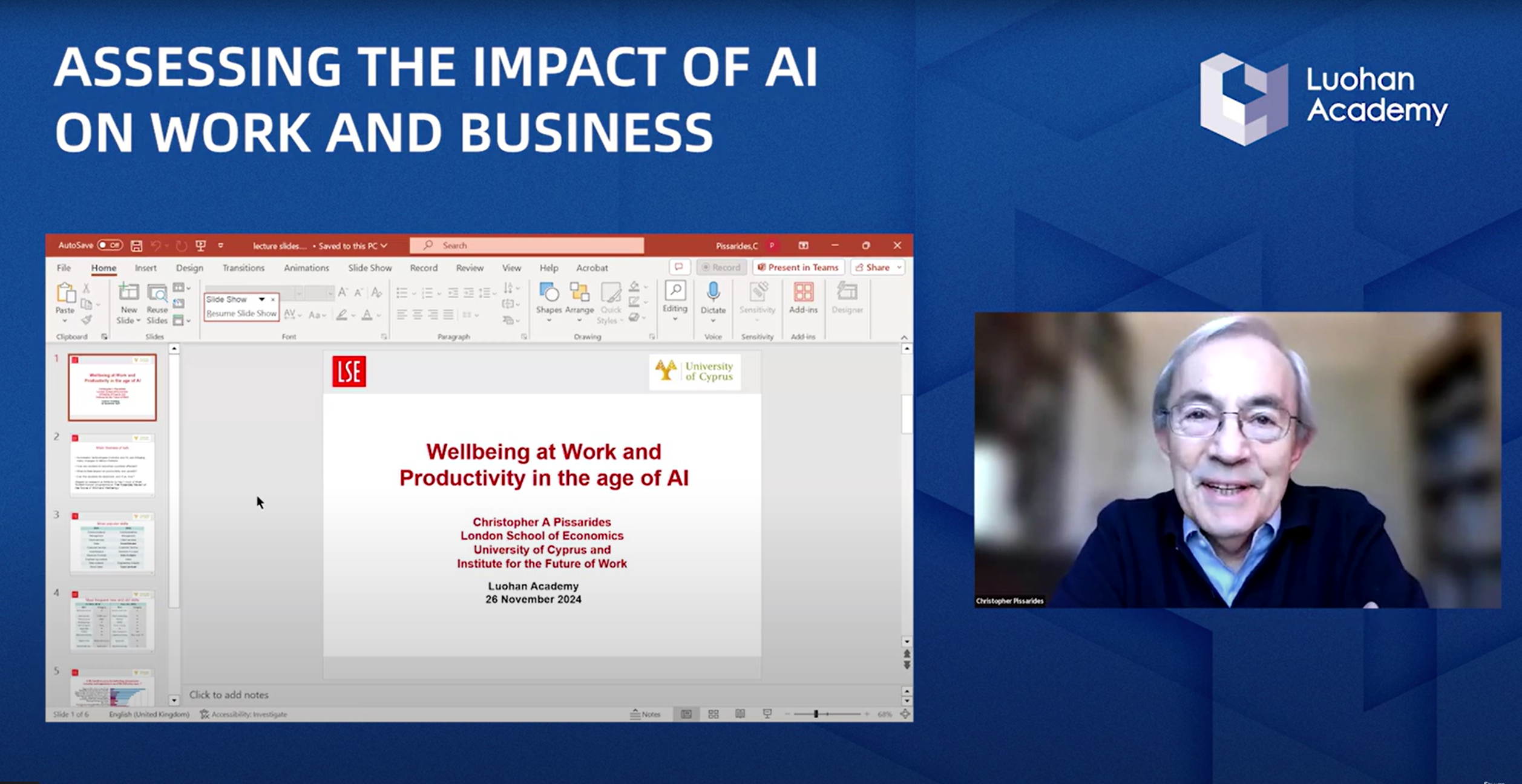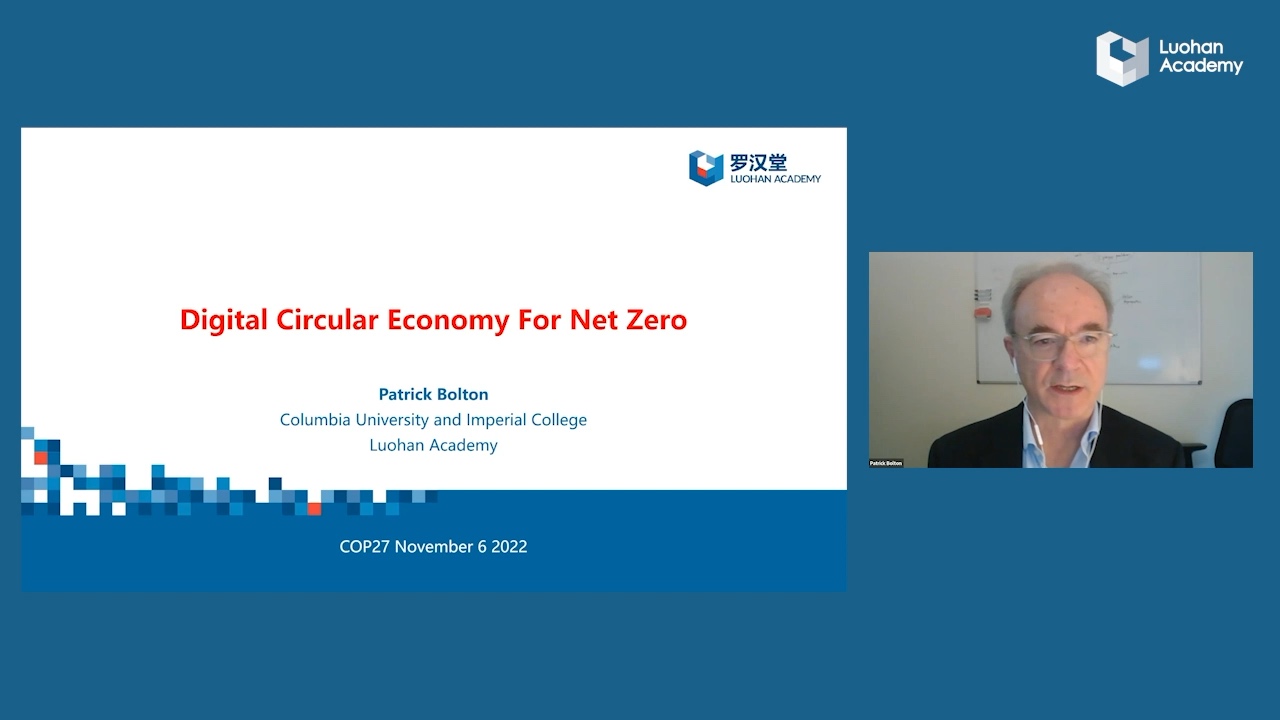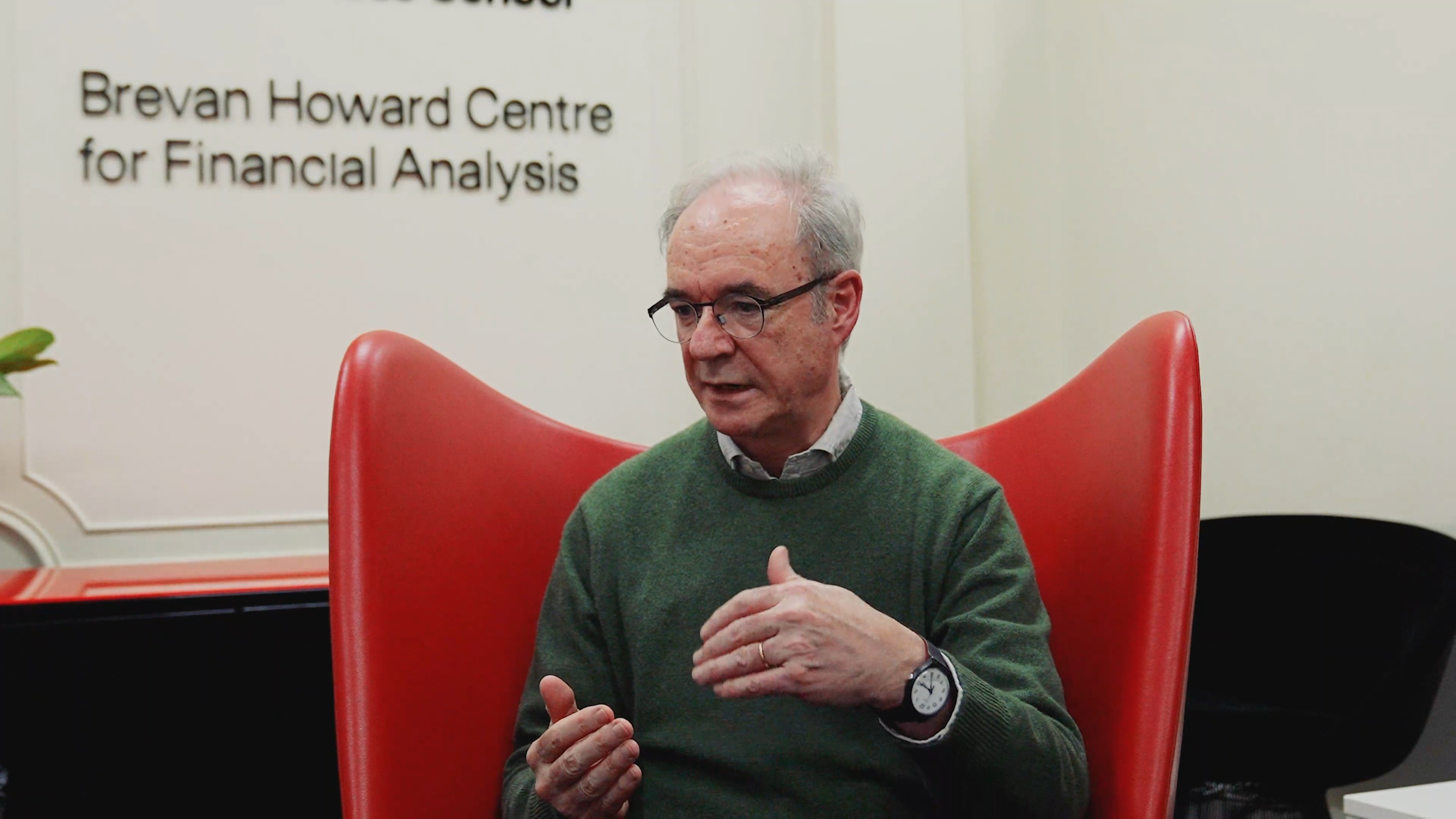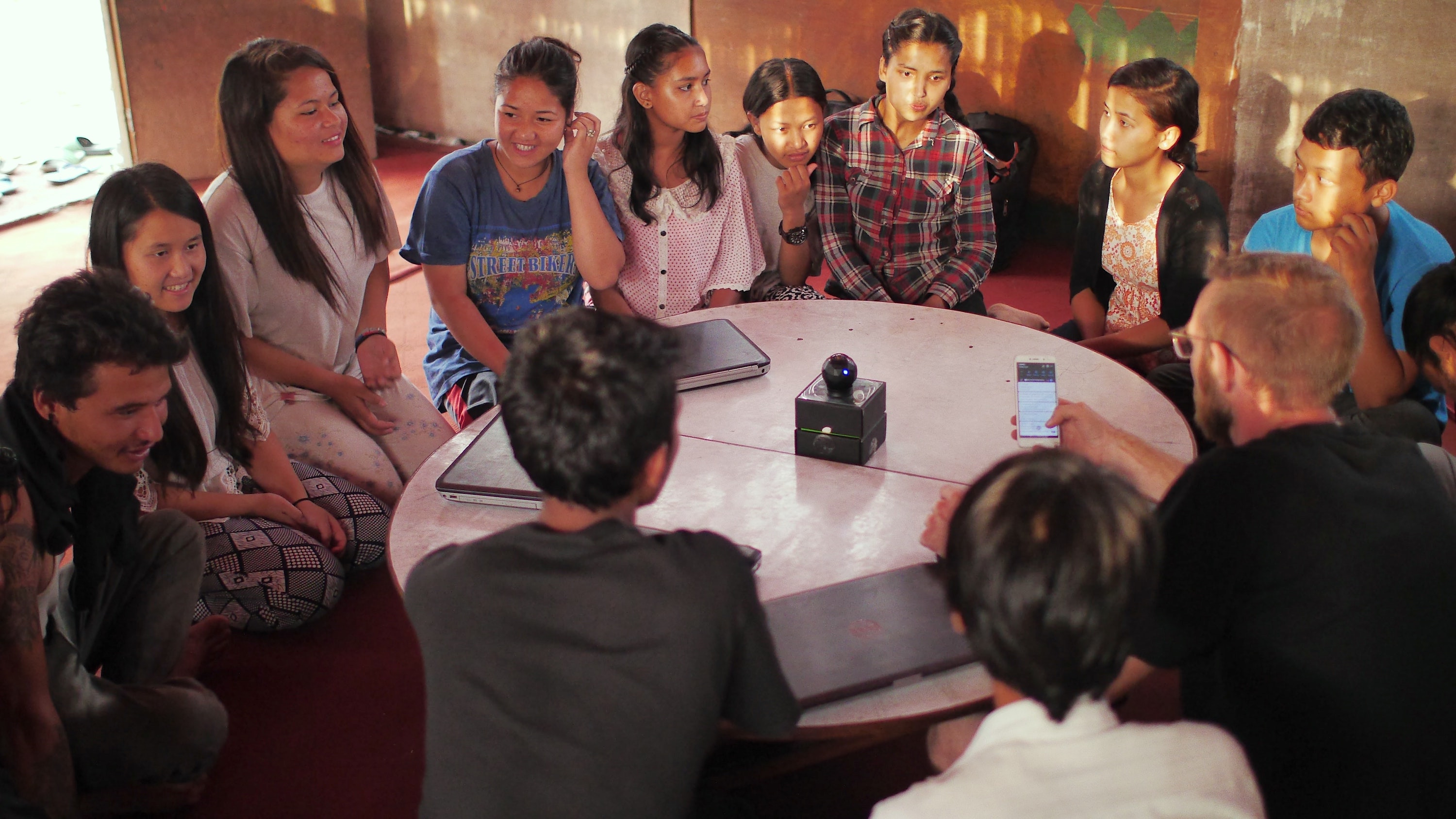For many decades, the Coase theorem of the "Division of Labor" between organizations and markets has been the fundamental framework for understanding resource allocation and coordination mechanism. However, with the emergence of digital technology and platforms, traditional boundaries are disappearing before our very eyes and giving way to the facilitation of large-scale coordination with unprecedented participation. The application of digital transformation is changing the nature of work and the structure of the economy. While digital platforms have enabled innovations and new coordination mechanisms, they also pose challenges ahead.
The 2nd Frontier Dialogue of Luohan Academy focuses on the "New Coordination and Market Dynamics". Its very purpose is to provide a place for prominent scholars, industry experts, policymakers to exchange views and address critical issues in practice regarding this topic. In particular, we hope to initiate discussions on what digital transformation means for crucial issues such as economic growth, inclusion, innovation, and competition.
Geoffrey Parker is a professor of engineering at the Thayer School of Dartmouth College where he also serves as director of the Master of Engineering Management Program. Prior to joining Dartmouth, he was a professor of management science at the A. B. Freeman School of Business at Tulane University and served as Director of the Tulane Energy Institute. At Dartmouth, he teaches courses in business platform strategy and data analytics in the engineering school and executive education in the business school. He is also a Research Fellow at the MIT Initative on the Digital Economy.
Transcript:
Geoffrey Parker:
So the theme today is new coordination and market dynamics. And what does digital transformation mean for crucial issues? Economic growth, inclusion, innovation, competition among other things.
I often will hide technology sector and talk about the old economy and the biggest seven firms in energy and finance. But of course we all know what's happened with the growth on the tech side. Not all of the revenue and market cap on those green bubbles (technology firms) can be attributed to platforms, but I think that if we were to dig into the revenue and business models of those firms, we'd see a lot of platforms. The huge market capitalization and rapid scaling fast largely began in B-to-C businesses, but the B2B side is growing fast. And that's what I want to talk about today and where I'm starting to try to do a lot more work.
I'm not going to talk about monopoly and antitrust today, but I think probably half the people on the call today are getting rapidly involved in that world. Just to recap, traditional linear value chains, we'll call them "pipes," accumulate value from stage to stage. If we were to dig into much of the management and economics literatures it would describe many industries with diminishing returns to scale.
Although you don't yet see the network effects in this type of a structure, we have a more fluid structure in platforms that allows for swapping in new suppliers and reconfiguring supply chains more rapidly. And that will become important in my discussion. Two-sided networks often become multi-sided and many people have categorized and tried to catalog this sort of life cycle growth over time.
COVID really seemed to accelerate the kind of tech/oil and banking divergence. If you were to look at finance and energy, this data comes from about July 2020. But JP Morgan, Wells Fargo, Saudi Aramco, Shell, Citigroup, Chevron, Airbus, they all took a tremendous hit. Since then, the energy sector has largely stayed flat, finance probably recovered about half of its losses, but is still down. On the platform and technology firm side, that was an explosion and that hasn't stopped. We're talking about Microsoft, Apple, Tencent, Facebook, Alibaba, and so forth and so on. Something appears to be pretty different. We've talked about that in many conferences, and if we had sort of longer time to dig into the switch between tangibles and intangibles, I think that would dovetail nicely with some of the slide decks that I think my follow on speakers are going to get to.
So now what I want to talk about is other firms and what's happening in other sectors of the economy. Prior to COVID, I got involved in the World Economic Forum global future councils on advanced manufacturing and production. And it was really a deep dive into perspectives on business and operating models. What are these firms doing, and largely manufacturing firms, to change business models? And are we seeing some kind of industry transformation? Lots of different firms, some of whom are represented here today, including small firms and many large manufacturing firms.
Firms were asked to provide case studies and map sort of what they are doing in their most novel business models? What's the roadmap on those? And then the World Economic Forum is also thinking about stakeholder capitalism, sustainability, and inclusiveness. Those topics dovetail to a lot of the concerns that we've got around rising inequity, around rising pollution, and around climate change. And are these business models doing anything that relates to those?
Once COVID hit, I did a number of probe interviews with a much smaller set of firms. And then it was a really simple set of questions. First of all, in the early days, what happened on the demand side? What happened on the supply side and what did the firms do about it? And the responses frankly, were quite emotional. So you really got to hear what firms and people went through as they tried to deal with the disruption. Some had business as usual and that wasn't too bad. Others executed a rapid pivot strategy if they were able to, a ride the wave strategy or a weather the storm strategy. Those are amusing titles, which basically mean either your demand stayed about flat and you didn't lose capacity. If your demand disappeared, you had to reallocate capacity. If you had an explosion of demand and you couldn't find enough supply then you had to change your supply chain. Or you had to hunker down and conserve resources.
So one example, which was interesting was out of the consumer packaged goods industry. They had a tidal wave of demand and you could hear it in their voices. They were scrambling to find any line anywhere on the planet, that could manufacture hand soaps and other cleaning supplies and any kind of personal protective equipment. A lot of the challenge turned out to be allocation of supply in equitable manner. It ended up being super manual. You would think that they would have all kind of wonderful AI and machine learning and forecast planning tools, but those tools all blew up. So they had to turn it all off because everything was out of sample. They also discovered, and this gets into the nature of a more triangular platform structure, that they needed to change a lot of policies and procedures to go into faster process validation, much faster supplier onboarding, and you could see them start to relax, what would have been much longer term supply chain arrangements. And then there was just an explosion of e-commerce.
I think we've seen that the firms that did well, especially on the retail side were ones that had an omni-channel access to consumers and the ones that were only brick and mortar tended to suffer. You could actually put as a special case in that category, restaurants until they reopened. And then they talked about stability returning. The data models started to get retrained at a new but much higher level of demand. So that's one story, and that's the explosive demand story.
Then we saw the flip side. This was out of the civilian aviation capital equipment market. And so they basically are dealing with a barren desert right now. They have contracts that are powered by the hour. That means that they did what they had been told would be good to stabilize their revenue streams, which is to stop selling lumpy capital equipment, and then try to just monetize on service revenues, but instead bundle those together and then earn revenue whenever an aircraft flies.
That works just fine until you ground the fleet. They had an approximately a 90% revenue drop early on, and you can see that in this graph of changes in weekly flight frequency. The U.S. is still way down, but global demand is back up to about half. You can see the China curve on the top, which seems to have come back primarily to normal. I'm just using Rolls Royce an as example, but the downturn hit across the industry. Rolls Royce reported a 20% workforce reduction and recapitalizations so they could shore up their balance sheet. They're looking at about a four year recovery. They're not looking at months, but they have to weather the storm for quite some time.
And then another example comes out of the automotive supply chain. In this case, the firm in question is way up the supply chain and sells a widely used component, about a hundred million units per year. People are probably familiar with the bullwhip effect, which is when something small happens down at the end of a demand system and that instability amplifies back up the chain. They were seeing about a 70% revenue decline. However, they didn't panic. The reason was based on their 2009, 2010 experience. They said, "well, we probably have about two to three months, and then we would expect this to go back." And it actually did. The things that benefited their ability to adapt to that were primarily around geographic and product flexibility, which means the assets could be used to address multiple markets and multiple regions. They viewed that as expensive. And if we have time for discussion, we should come back to that notion because I think with increased digitalization and flexibility, there might actually be a revenue win there instead of just viewing it as an insurance contract.
The agriculture capital equipment example was an interesting one. This is primarily North America, where nothing terrible happened on the demand side. But the service side basically would have gone dark because people weren't allowed to be out in the field. And luckily they had made a digital investment in remote service prior to the pandemic, which was largely viewed as a waste. And I think that's an important theme because it gets to how these investments end up ultimately generating value. COVID hit literally right before the North American planting season. And the example here is meaningful because there's a two to three week window that you have to get the seeds into the ground or else you start to see crop yield losses. These people are dealing with much of the productive capacity of North American farming. Luckily they had remote monitoring investment and that made continued operations possible. Usage of the remote system exploded. So, it is a good story, but almost by luck.
The food truck pivot was fun because an intermediary came in to match supply and demand because the trucks themselves didn't have the demand sensing capability and the stable demand pattern they normally served at lunchtime disappeared. But the evening dinner demand that was day by day and region by region exploded. They ended up with more demand than they knew what to do with.
Mayo Clinic has done a lot. And maybe Hal Varian can talk about that, because it was a big Google effort with petabytes of de-identified data, hundreds of partnerships. The punchline there is that they had this roadmap of how to do partnerships that they figured would take around 10 years execute and they largely think they've figured out how to do those in just months. And that experience of seeing years of change happen in weeks and months was one that we frequnetly heard.
We were really interested what's the business and operating model adaptation. There were lots of failures. These failures were seen with inflexible human resources and organizational processes. There were lots of constrained capital issues, and inflexible information systems. And of course the biggest one was this giant demand and supply imbalance that firms had to rebalance in real time,
But there were also lots of successes. And I think those dovetail to this workshop today. The successes were seen around redeploying manufacturing capacity, end to end digitalization, and the effectiveness of remote access. And the zoom technology that we're using today in many ways mirrors that. Lots of cross-training was important too. The ability to use computers and use more digital tools to complement human capital was a story that we heard over and over again. Some systems, and I think Alibaba was one of them, stepped in to provide capital and liquidity to smooth things over. And then we heard this theme of more fluid supply chain arrangements and platformization.
So to wrap, this is exploratory work, interview data, and some survey work where we are trying to figure out how the non-tech firms are taking the digital adaptation ideas because they're all aware of what's happened and are trying to implement them. Then you have very high stress event with COVID that gave them permission to be able to do a lot of experimentation because they had to adapt in a global context.
We heard about trade tensions and resilience and climate change. The stress on the people, if you really talk to them, especially in the firms that had to do big adjustments is just palpable. End to end digitization happened. I think many firms saw that things happening in the factory and the supply chain were critical and became a lot more visible up at the strategy side. If you think about pivoting on new product development rapidly and having some visibility as to what the capacity is, it was much easier for those firms that had already made the investments. Finally, the early efforts in digitization, AI and machine learning often fail. I'm sure that the major technology vendors can speak about. Many firms think that they're going to get magic for their AI investment or digital investment, but what they really get is infrastructure. And if they're looking for two to three year returns, they're not thinking clearly enough about the problem and the opportunities the investments can create. That issue of wanting near term investment returns is a consistent theme that has cased firms to cancel a number of their digital investment projects, possibly too early.
For more information, please visit Luohan Academy's youtube channel: Luohan Academy









